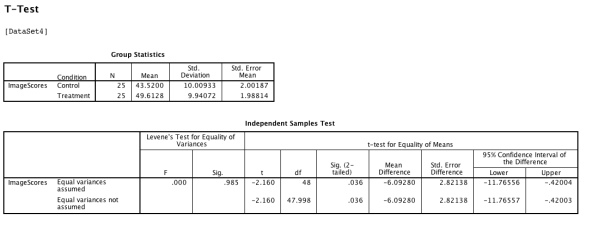Multiple Choice
After careful ethical review of planned procedures, a researcher tests a new brain activation drug by taking a sample of 50 volunteers and randomly assigning 25 participants to the treatment condition and 25 to the control (placebo) condition.She then carries out an fMRI scan to assess the level of activation in regions of the participants' brains 30 minutes after administering the drug.She carries out a between-participants t-test in SPSS which provides the output shown below:  Which of the following statements is true?
Which of the following statements is true?
A) The result is not significant because the p value is .985.
B) The result is not significant because a negative t-test indicates a negative result.
C) There are 48 degree of freedom because N is 50 and there are two groups.
D) The scan measures processes within-participants' brains so the researcher should have performed a within-participants t-test.
E) We need to make sure the correlation between the control and treatment scores is more than .3 before we can confidently use the t-test.
Correct Answer:

Verified
Correct Answer:
Verified
Q5: "The set of principles that guide humane
Q6: Which of the following statements is true?<br>A)Good
Q7: In reviewing themes as part of thematic
Q8: "The sources from which qualitative data are
Q9: A developmental psychologist developed a training program
Q11: "A body set up by a research
Q12: With what is the nomothetic approach typically
Q13: A health psychologist plans to conduct a
Q14: A behavioural neuroscientist wishes to study the
Q15: A researcher, Bill, adopts a qualitative research